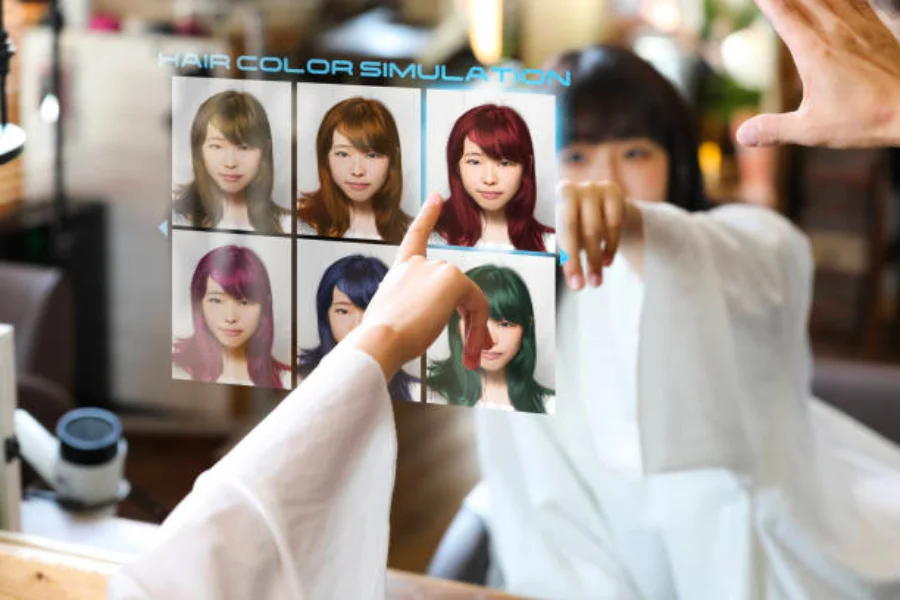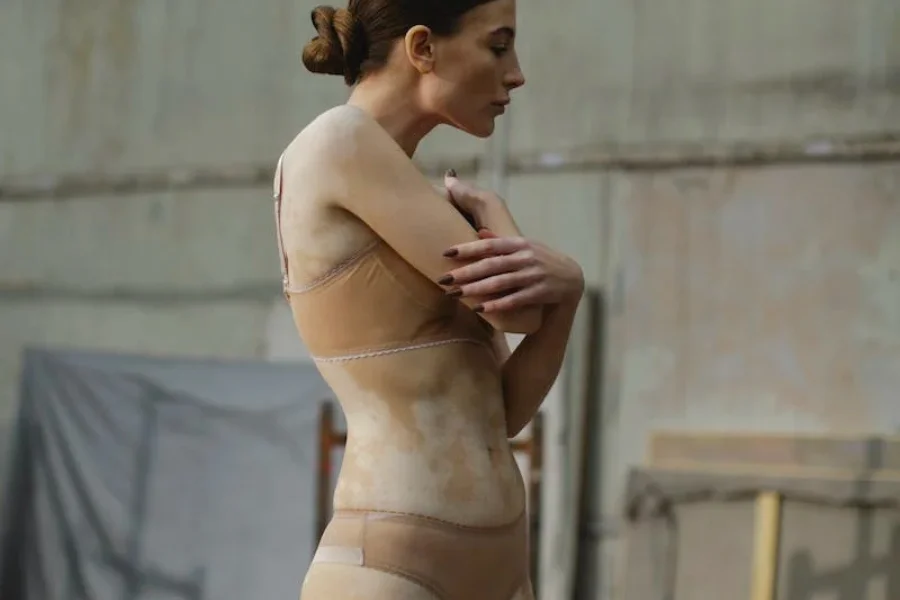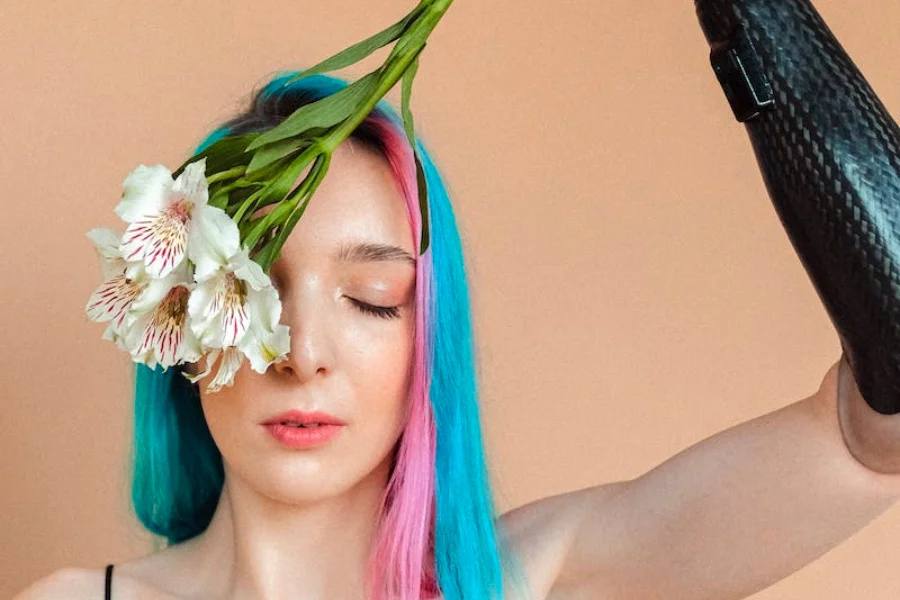The beauty industry is embracing diversity and inclusiveness, moving away from traditional standards to embrace all forms of beauty.
To stay ahead in this evolving market, it’s important to understand the dominating beauty trends. This article will delve into six trends that are shaping the modern beauty industry.
Table of Contents
The market for beauty products
6 emerging beauty trends
Expanding the definition of beauty
The market for beauty products

The global beauty market has seen a surge in self-care investments, with individuals placing a greater emphasis on skin health and appearance.
In 2023, the market is valued at US $571.1 billion and is projected to grow at a compound annual growth rate (CAGR) of 3.8% until 2027, with a year-over-year increase of 8%. This is by far the highest growth rate in the past decade.
Skincare products comprise the largest share of the cosmetics market, followed by hair products and makeup, and online distribution channels play a key role in its growth.
6 emerging beauty trends
The beauty industry is being influenced by a diverse range of voices, leading to new trends that prioritize indigenous communities, ethical sourcing, breaking beauty standards, and more.
The trend is moving away from traditional beauty and towards inclusiveness and self-expression.
1. Indigenous representation

There’s a lack of appropriate representation and imaging of indigenous people in the current beauty industry. A good aspect to discuss is their broad skin gradient. Depending on the topographic location, indigenous people may have brown to dark skin palettes in general.
The key is to cater to a wider skin color gamut in your collection. For example, you can offer varying shades of brown foundation as well as its lighter and darker counterparts. This also applies to other products that relate to skin tone.
Brands can adopt traditionally processed cosmetics, paired with ethical material sourcing. Herbal facial soaps, organic facial kits with plant extracts, and other skincare products are good examples of this. Ultimately, you want to focus on the image of empowerment. Dig deeper into their culture to ensure that you’re accurately representing consumers.
2. Virtual beauty

Virtual idols and influencers are slowly being used as brand ambassadors today, especially with the rise of their popularity in East Asia. A great example of this is the latest ambassadors of the well-acclaimed brand, Nars.
These virtual avatars are seen as an excellent solution for people who want to “try on” products first before purchasing. For instance, someone may simulate the hair color first on their avatar and see if it would look good. Brands like Maybelline and MAC also offer virtual makeup software for similar purposes.
You can hop onto this trend by adopting virtual simulators for your beauty products. Do ensure to offer multi-color makeup palettes, varying shades of lipsticks, and other relevant products side-by-side.
3. Ethical products

Ethical products refer to almost any offer that does minimal to no harm to the environment and customers. In terms of skincare, waterless formats, sustainable products, and those manufactured without animal cruelty are great examples.
Local crafts are also in-demand, especially since they require fewer logistics, which translates to lower carbon emissions from transportation.
Brands can take advantage of this trend by offering products like reusable makeup remover pads and vegan lipsticks. Investing in home compostable packaging would also bring forward a positive brand image, aside from helping the environment.
4. Deconstructing beauty standards

In the eastern and western parts of the world, having fair and flawless skin is considered the goal.
Today, the trend is to stay away from existing beauty standards — taking a route to more personalized and individualized routines. Start by offering skin care products that aim to enhance rather than modify.
Acne-preventing facial masks and serums are great items to add to your collection. Tinted foundations and highlighters would suit those who want to flatter their freckles, so ensure to include them in your catalog too.
Many people are also getting more interested in keeping the natural texture of their hair over straightening it with an iron. Consider offering hair masks, leave-in conditioners, hair mousse, and similar items to your customers.
5. Catering to underserved markets

This trend is all about facing the “taboo” topics that are usually not talked about in the space.
Eczema, melanated skin, acne, discoloration, and the like are not being tackled enough, which is now becoming the opposite.
Brands can hop onto this trend by revamping their collections with skin-lightening products. But ensure that your marketing is aimed towards evening out the skin tone, not promoting light-skin supremacy.
You can also cater to people afflicted with pimples by offering hydrocolloid patches. Offering good sunscreen and chemical peels would also complete your catalog.
6. Stretching limitations

Creativity is the hot thing nowadays, especially among Gen Z. It’s a way they can express themselves and their statements in life. And there’s almost no limit to their creative makeup — not even bound by beauty standards.
Two styles that are dominating the mainstream today are goth and cowgirl-inspired looks. They feature bold and punk-like themes that usually incorporate darker palettes in eye shadows and lip colors. You’ll often see people with these styles donning piercings and cowboy hats too.
To keep the rest of your customers’ interests, you’d want to consider adding dark makeup palettes and bold lipsticks in black, red, and other unusual shades. Unconventional colors like blue, neon green, and dark red hair dyes would also be a great addition to your collection.
Expanding the definition of beauty
The beauty industry is embracing diversity and inclusiveness, breaking down traditional beauty standards to include all appearances.
To stay ahead in this evolving market, it’s important to incorporate these changes into your business strategy and better cater to your customers’ needs.




